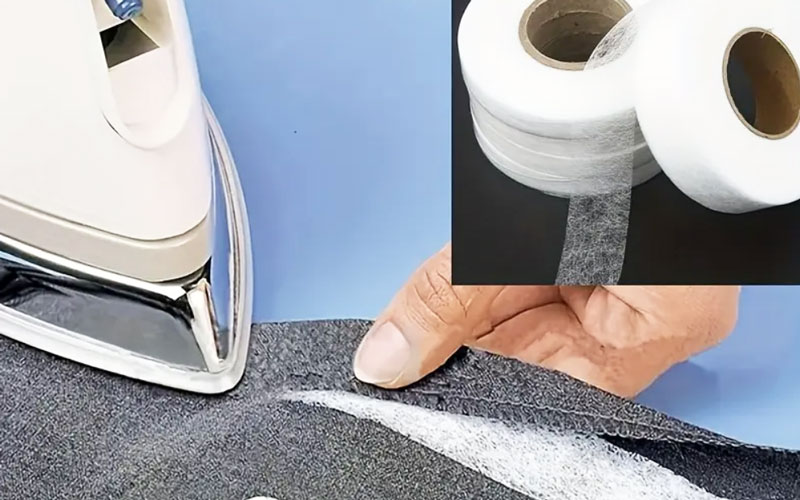Hot melt adhesive film has become a go-to bonding solution across industries due to its clean application, strong adhesion, and versatility. Whether you’re in the textile industry, automotive manufacturing, or electronics assembly, learning how to use hot melt adhesive film effectively can significantly improve product quality and production efficiency.
In this article, we’ll walk you through everything you need to know about hot melt adhesive film — from its benefits and applications to step-by-step usage instructions and pro tips for optimal performance.

What is Hot Melt Adhesive Film?
Hot melt adhesive film is a solid thermoplastic adhesive supplied in sheet or roll form. It’s typically composed of EVA (ethylene-vinyl acetate), TPU (thermoplastic polyurethane), PES (polyester), or PA (polyamide). Unlike liquid adhesives, it doesn’t require solvents, making it more environmentally friendly and cleaner to work with.
When heated, the film melts and becomes tacky, enabling it to bond with various substrates. Upon cooling, it solidifies, forming a strong and durable bond. This process makes hot melt adhesive film ideal for laminating, sealing, or assembling materials like fabric, metal, wood, plastic, or even glass.
Benefits of Using Hot Melt Adhesive Film
Before diving into how to use hot melt adhesive film, it’s important to understand why so many manufacturers are turning to this solution:
Clean and precise application: No dripping, oozing, or mess compared to liquid adhesives.
Fast processing time: Rapid cooling and bonding speeds up production lines.
Eco-friendly: Solvent-free, VOC-free (volatile organic compounds).
Strong and flexible bonds: Ideal for applications requiring durability and resistance to stress or heat.
Broad material compatibility: Works on textiles, composites, foams, plastics, wood, and more.
Common Applications
Hot melt adhesive film is widely used in industries such as:
Textile and apparel: Bonding logos, patches, linings, or interfacing in garments and shoes.
Automotive: Interior trim, seat cover lamination, headliner bonding.
Electronics: Securing display screens, insulation films, and battery packs.
Packaging: Tamper-proof seals and laminates for flexible packaging.
Furniture: Laminating veneers or foam panels to various substrates.
How to Use Hot Melt Adhesive Film: Step-by-Step Guide
Now let’s get into the core of this article — how to use hot melt adhesive film properly.
Step 1: Choose the Right Film
Not all hot melt adhesive films are the same. Choose a film that matches your materials and performance requirements:
EVA film: Suitable for textiles and paper-based substrates.
TPU film: Great for elastic materials or applications requiring flexibility.
PES film: Best for high-temperature resistance and rigid materials.
PA film: Good chemical resistance and strong adhesion for technical textiles.
Pay attention to melting point, bonding strength, flexibility, and durability.
Step 2: Prepare the Substrates
Cleanliness is critical. Dirt, oil, or dust can compromise adhesion. Make sure both substrates (materials to be bonded) are dry and clean. If necessary, wipe the surfaces with alcohol or use a low-residue cleaner.
Step 3: Cut and Position the Film
Cut the hot melt adhesive film to the size and shape you need. Place it between the two substrates you want to bond. Ensure it lies flat without wrinkles or folds.
Step 4: Apply Heat and Pressure
The most common methods of applying hot melt adhesive film are:
Heat Press Machine: Perfect for flat surfaces like fabrics or composite sheets.
Laminating Machine: Used for continuous rolls of material.
Iron or Hot Roller: Suitable for small-scale operations.
Here are typical bonding conditions (note: always refer to the manufacturer’s data sheet):
Temperature: 100°C – 160°C (depending on the film type)
Pressure: 2 – 5 bar
Time: 10 – 30 seconds
Too much heat or too long a dwell time can burn or warp sensitive materials, so testing beforehand is crucial.
Step 5: Cooling and Finishing
After heat is applied and pressure is maintained for the specified time, allow the materials to cool down under light pressure. As the film cools, it hardens and completes the bond. Some applications may require post-curing for maximum strength.

Pro Tips for Best Results
Test before mass production: Every material reacts differently. Small-scale testing helps avoid waste and ensures bonding parameters are correct.
Use Teflon sheets or silicone paper: These prevent sticking to heat press surfaces.
Store properly: Keep the film in a dry, cool place to maintain its adhesive properties.
Edge sealing: In waterproof applications, use additional sealing around the edges if needed.
Avoid air bubbles: Apply pressure evenly to eliminate trapped air which can reduce bonding strength.
Troubleshooting Common Issues
Here are some common problems users face when learning how to use hot melt adhesive film and their solutions:
| Problem | Cause | Solution |
|---|---|---|
| Weak bonding | Insufficient temperature or pressure | Recheck equipment settings |
| Film not melting | Low heat or expired film | Raise temperature or use fresh material |
| Wrinkles or misalignment | Improper film placement | Reposition carefully before heating |
| Substrate damage | Overheating | Lower temperature or reduce dwell time |
Environmental and Safety Considerations
While hot melt adhesive film is generally safer than solvent-based adhesives, precautions should still be taken:
Work in a well-ventilated area.
Use heat-resistant gloves during handling.
Avoid overheating to prevent toxic fumes or material degradation.
Dispose of film scraps responsibly according to local regulations.
Conclusion
Understanding how to use hot melt adhesive film can unlock a world of possibilities in manufacturing and design. Its versatility, strength, and ease of use make it ideal for bonding tasks in diverse industries. By choosing the right film, preparing your materials properly, and using appropriate heat and pressure, you can achieve professional, high-performance results every time.
If you’re considering implementing hot melt adhesive film in your production line or product development, it’s worth consulting with a reliable supplier who can provide customized solutions and technical support.
Looking for high-quality hot melt adhesive film for your next project? Contact us today for expert advice, sample requests, or bulk orders.
